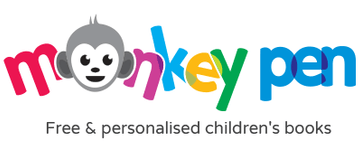The Neuroscience of Creativity: What Happens in the Brain During Coloring
Nov 20, 2025
Why Coloring Is More Than Play
Coloring is a very popular pastime; however, research suggests it's a powerful tool to develop the brain's capacity to think and make. For children, it's more than coloring shapes using color. It's about how their brains shine when they're shading. The act of choosing hues, focusing on lines, and visualizing results simultaneously stimulates multiple parts of the brain. Recent research on the neuroscience of coloring and its effects has shown that something so fun can be associated with emotional growth, creativity, problem-solving, and imagination.
The Creative Brain: A Quick Overview
Creativity doesn't originate from one "creative location" within the brain- it's a process that is networked. Neuroscientists recognize three primary mechanisms that are involved when we make something:
- The Default Mode Network (DMN) is active during the day and during imagination.
- The Executive Attention Network helps us plan, concentrate, and make choices.
- The Salience Network: switches between imagination and focus, helping balance actions and ideas.
Children who color can make their brains sync up, the imagination flows, focus increases, and emotional regulation improves. This is the basis for the brain's ability to create in children. Play stimulates brain development.
How Coloring Activates the Brain
When a child grabs a pencil or crayon, the brain starts to play some music. The motor cortex regulates hand movement, the visual cortex interprets shapes and colours, and the prefrontal cortex assists in decision-making and creative planning. The limbic system, which controls emotion, is involved- providing a feeling of calmness and happiness.
This is why coloring is a process that involves both sides of the brain:
- The left hemisphere handles accuracy, order, and patterns.
- The right hemisphere is the seat of creativity, expression, and visual imagination.
The combination makes coloring one of the best ways to train young minds.
Coloring and Brain Development in Children
In the early years of the child's life, the brain becomes extremely flexible. Scientists refer to this as neuroplasticity. Every time a child colors and draws, the brain forms stronger pathways that support the development of fine motor skills and concentration.
Brain development studies and art have shown that coloring activities can help build links between sensory experience and cognitive development. That means that children who regularly color show improvements in memory, emotional regulation, and even language development.
It's not surprising that educators and psychologists frequently incorporate art-based activities into early learning programs. They directly influence how the brain develops and learns.
The Neuroscience Behind Calm and Focus
One of the more intriguing discoveries in neuroscience is that coloring affects meditation. As youngsters (or even adults) color and release dopamine, the brain releases a neurotransmitter called dopamine, which is a "feel-good" neurotransmitter associated with happiness and relaxation.
Similarly, the amygdala, the brain's centre for stress and fear, is less active. This decreases anxiety and increases attention span. This is the reason why children who color after a hectic day are often calmer and more focused.
Regularly practicing coloring can improve concentration and emotional stability. Both are essential to creative thinking.
The Link Between Coloring and Creativity
Creativity goes beyond artistic talent. It's the ability to connect ideas in innovative ways. Coloring encourages self-expression and risk-taking in a safe setting.
Research on creativity and neuroscience suggests that creativity is the ability to switch between a free-flowing imagination and structured problem-solving, precisely what coloring does. When a child is asked to decide if the tree should be colored green or purple or how to mix two shades of color, the brain develops flexibility and creativity.
These little creative ideas boost the brain's ability to think differently- an essential skill for learning empathy, creativity, and innovation.
How Art Strengthens Neural Connections
Each creative activity, including coloring, builds synaptic connections- the bridges that connect brain cells. Coloring, in particular, encourages:
- Sensory integration: linking sight, motion, and movement.
- Fine motor precision: coordination of the small muscles of fingers and hands.
- Spatial reasoning: Understanding shapes, distance, and proportion.
- Pattern Recognition: Recognizing and forecasting visual patterns.
These neural benefits are not just for the development of art but also improve academic abilities such as writing, reading, and math. Coloring, in fact, aids in the development of brain "wiring" that is vital to lifelong learning.
Educational and Emotional Benefits
From the teachers' viewpoint, coloring enhances students' concentration and co-operation. From a parent's perspective, coloring improves perseverance and builds confidence.
Color-loving children frequently exhibit:
- Improved problem-solving skills and observation
- More persistence and focus
- An enhanced emotional vocabulary
- Better visual memory and imagination
If your child is having trouble with the process of expressing emotions through words, difficult art can help to bridge the gap between emotions and understanding. Neuroscience has proven that this method of non-verbal expression aids children in understanding and processing emotions more efficiently.
Encouraging Creativity Through Coloring
Teachers and parents can use simple strategies to create a fun coloring activity that stimulates the brain:
- Give a variety of themes- nature, stories, and even culture- to inspire curiosity.
- Encourage experimentation with different hues or textures.
- Discuss the drawings they've made to link art and the development of language.
- Coloring them together improves the bonding process and teaches mindfulness.
Incorporating shading into your daily routine helps boost creativity, improve your mood, and give your brain room to expand and reflect.
The Art-Science Connection
Coloring may seem simple, but neuroscience tells us it's a workout for the brain. It helps improve focus, boosts imagination, and develops emotional intelligence.
When a child draws, neurons communicate, emotions are calmed, and creativity blossoms. This is a subtle reminder that art is not a distinct thing from science. It's just one of its most gorgeous expressions. Through something as fun and easy as coloring, they are creating their minds to process information, experience, and see the world in exciting new ways.
At Monkey Pen, we have created a wonderful collection of free coloring books and free coloring pages for kids. Select from the wide variety: start shading pictures with the hue of your creativity. The website also offers various educational resources, including posters, children's books, and dot-to-dot workbooks. All are available in PDF format at absolutely no cost. Start coloring and boost your brain!


